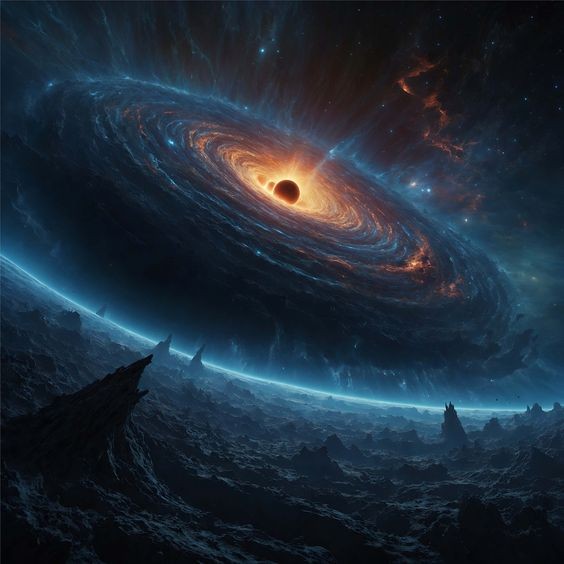Unraveling the Mysteries of Black Holes: Nature's Dark Giants
Black holes have long fascinated scientists and stargazers alike, embodying some of the universe's most intriguing mysteries. These enigmatic entities challenge our understanding of physics, space, and time. In this article, we will explore what black holes are, how they form, and their significance in the cosmos.
What is a Black Hole?
A black hole is a region in space where the gravitational pull is so strong that nothing, not even light, can escape from it. This intense gravity is a result of an enormous amount of mass concentrated into a very small area. The boundary surrounding a black hole is called the event horizon, which marks the point of no return; once something crosses this threshold, it cannot escape.
Types of Black Holes
Black holes can be classified into three main categories:
Stellar Black Holes: Formed from the remnants of massive stars after they undergo supernova explosions. These black holes typically have a mass between 3 and 20 times that of the Sun.
Supermassive Black Holes: Found at the centers of most galaxies, including our Milky Way. These black holes can have masses ranging from millions to billions of solar masses. Their formation is still a subject of research, but they are believed to grow over time by accumulating mass from surrounding matter.
Primordial Black Holes: Hypothetical black holes that may have formed shortly after the Big Bang due to density fluctuations. Their existence remains unconfirmed, but they could provide insights into the early universe.
How Black Holes Form
The formation of black holes primarily occurs through the lifecycle of stars. When a massive star exhausts its nuclear fuel, it can no longer support itself against gravitational collapse. The core collapses, and if the remaining mass is sufficient, a black hole is born.
The Life Cycle of a Star
Main Sequence: A star fuses hydrogen into helium, maintaining balance between gravitational forces and internal pressure.
Red Giant: As hydrogen is depleted, the star expands and cools. Helium fusion begins.
Supernova: For massive stars, the core collapses, leading to a supernova explosion, leaving behind a neutron star or a black hole.
The Significance of Black Holes
Black holes play a crucial role in our understanding of the universe. They influence the formation and evolution of galaxies and affect the orbits of nearby stars. Supermassive black holes, in particular, are believed to help shape the structures of galaxies over cosmic timescales.
Black Holes and Time
One of the most fascinating aspects of black holes is their effect on time. According to Einstein's theory of relativity, time behaves differently in strong gravitational fields. Near a black hole, time slows down relative to an outside observer, leading to mind-bending scenarios that challenge our perception of reality.
Discoveries and Observations
Imaging a Black Hole
In 2019, scientists achieved a monumental breakthrough by capturing the first-ever image of a black hole's event horizon using the Event Horizon Telescope (EHT). This achievement provided visual evidence of black holes and offered insights into their properties.
Gravitational Waves
The detection of gravitational waves—ripples in spacetime caused by merging black holes—has opened a new window into astrophysics. These waves confirm the existence of black holes and provide valuable data about their characteristics.
The Mysteries Yet to Unravel
Despite significant advancements in our understanding, black holes still harbor many secrets. Questions about their internal structure, the nature of singularities (points of infinite density), and the potential for wormholes continue to challenge scientists.
The Information Paradox
One of the most profound puzzles is the information paradox, which questions what happens to information that falls into a black hole. Does it disappear forever, or is it somehow preserved? This paradox sits at the intersection of quantum mechanics and general relativity, highlighting the need for a unified theory of physics.
Conclusion
Black holes are nature's dark giants, captivating our imagination and pushing the boundaries of scientific understanding. As we continue to unravel their mysteries, these enigmatic objects not only enhance our knowledge of the universe but also challenge us to rethink our fundamental ideas about space, time, and gravity. With ongoing research and technological advancements, the journey to uncover the secrets of black holes is far from over, promising exciting discoveries in the years to come.






